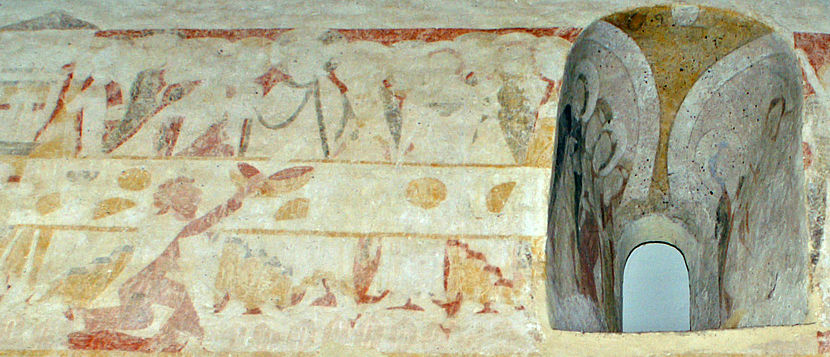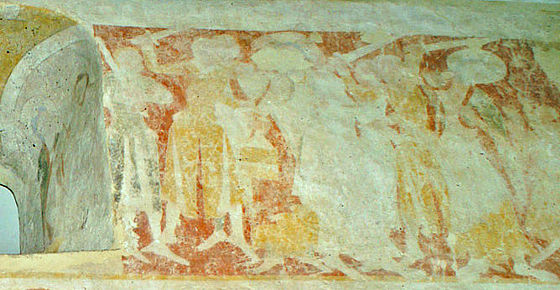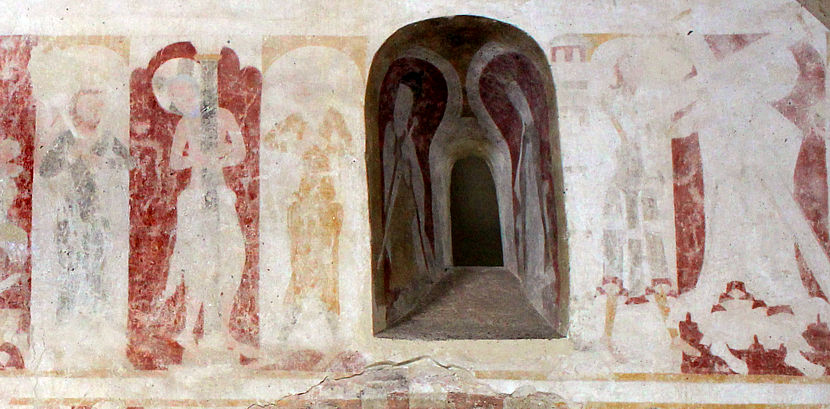Ickleton, Cambridgeshire (†Ely) 1150-1200
Passion Cycle
An incomplete, but very fine Passion Cycle above the arches of the North Arcade. The excellent guidebook in the church rightly describes its discovery as ‘of national importance’. These paintings are not only of very early (1150-1200) date, but also of the highest quality. More than that, they are a very rare example of ‘true fresco’ technique in English wall painting.


The Cycle as we have it begins at the west end (above) of the arcade, with a well-preserved Last Supper. Judas is shown in his traditional position in early painting – on the opposite side of the table to everyone else. He is in the act of taking a fish from a dish, placed immediately in front of Christ, on the table. This may be intended to mean that Judas is a thief, or is greedily taking more than his share. Or of course the appropriation of the fish may be heavily symbolic of his betrayal of Christ. Or both may be intended, as so often. This particular iconographical detail is not unique in the history of art, but the only other example I know of in the English church is at Belchamp Walter in Essex.
To the right of this scene is the Betrayal and Arrest, including the detail of Malchus, the High Priest’s servant with his lantern (second left). The scene is faint and obscure now, but various figures with raised swords, including Peter at the right striking Malchus, who is shown again, now fallen onto his knees at the far right, can all be made out.

To the right of this scene is the Flagellation, (shown above to the left of the window), with Christ tied to a pillar of classical appearance under a painted arcade. This detail shows fairly well, and the yellow-painted torturer to the right of Christ can also still be seen. Beside this man is a window, with saints – a seated, crowned female figure on the right and perhaps St James on the left – painted in the splays, and then comes the Road to Calvary, where Christ is placed centrally, carrying the cross. Two figures flank him, the one on the left visible here. The whole cycle probably once continued farther to the east, perhaps on to the east wall of the nave, but later rebuilding of the chancel arch would have destroyed anything painted here.
There are other paintings in the church, including, below the Passion Cycle, very interesting scenes of the martyrdoms of St Peter, St Andrew and St Laurence (this last identification slightly uncertain, but convincing to me). For paintings of various subjects but comparably early date, follow the links at the top and bottom of this page. There is also good 14th century painting elsewhere in the church, including a Doom showing a bare-breasted Virgin interceding for souls.